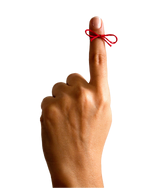Une simple promenade dans le quartier peut être source de multiples apprentissages pour les jeunes, en plus d’oxygéner le cerveau. Découvrir son environnement et la nature hors de la classe, c’est un véritable laboratoire à ciel ouvert!
Le concept scandinave du « forest schooling » prend de l’ampleur et les adeptes sont de plus en plus nombreux puisque les avantages d’enseigner à l’extérieur sont multiples. Bien que plusieurs établissements incluent à l’horaire des périodes à l’extérieur et aménagent des espaces pour les rassemblements confortables sur le terrain de l’école, on n’en est pas à enseigner dehors tout le temps. Néanmoins, planifier des sorties régulières permet déjà de bénéficier de plusieurs des avantages d’enseigner à l’extérieur.
En ce sens, la compagnie Forest School Training a identifié, dans une étude, une augmentation ou une amélioration de :
- l’estime personnelle et la confiance en soi;
- les habiletés sociales;
- le langage et les aptitudes à communiquer;
- la motricité et les habiletés physiques;
- la motivation et la concentration;
- la connaissance et la compréhension de l’environnement.
On peut certainement affirmer que lorsqu’on aime une chose, on en prend soin. Initier les enfants aux plaisirs et à la magnificence de la nature pourrait avoir un impact positif sur les choix environnementaux de ces petits citoyens qui deviendront grands. Cette façon d’apprendre est tout à fait en accord avec le programme de formation de l’école québécoise, qui demande qu’on éveille les enfants à l’environnement.
On a intérêt à développer la compétence numérique à plusieurs niveaux en se rendant à l’extérieur. Il est donc très pratique d’apporter avec soi un ou plusieurs appareils selon les activités. On peut par exemple prendre des photos, colliger des données, se renseigner rapidement en répondant à une question sur le terrain, filmer des séquences à partager avec un autre groupe, etc.
Des idées d’activités
La situation sanitaire particulière des derniers mois demande aux enfants de demeurer dans le même local toute la journée : respirer un peu le grand air peut devenir nécessaire. C’est l’occasion de tenter l’expérience de l’enseignement dehors. Voici quelques propositions d’activités à faire autour de l’école, soit dans la cour, le parc, le boisé, la ruelle, les trottoirs du quartier, etc. Ce peut aussi être près de la maison en cas d’enseignement à distance.
Voici aujourd’hui des exemples d’activités pour le français et les mathématiques. D’autres matières seront abordées dans un deuxième article.
Français
Classes de mots
Apprendre ce qu’est un verbe en courant, en sautant, en saluant, c’est beaucoup plus concret pour les enfants. Il est aussi pertinent de leur demander d’observer un arbre, une fleur, un immeuble, une voiture et d’en donner trois qualités ou défauts qui seront souvent des adjectifs, qui accompagnent également des noms! On peut aller plus loin et utiliser les mots trouvés dehors pour écrire des phrases, une histoire ou pour monter une banque de mots.
Écriture d’haïkus
Une belle marche dans la neige ponctuée d’arrêts où on lit des haïkus associés aux arbres, au ciel, peut inspirer les enfants pour qu’ils en écrivent à leur tour. En leur demandant de repérer un élément de leur environnement, de le regarder avec différentes intentions (si tu es un oiseau, si tu es un grand-papa, si tu es une fourmi…), ces observations généreront des idées pour créer un haïku riche et coloré.
Lecture d’affiches ou d’enseignes
Il n’est pas nécessaire d’avoir une forêt dans le quartier pour que la sortie soit pertinente. Dans un milieu plus urbain, par exemple, effectuer un « cherche et trouve » de bâtiments commerciaux ou municipaux en lisant les affiches peut permettre de belles découvertes. « Écris les noms de : 3 cliniques dentaires sur la rue Saint-Laurent, 2 écoles, 5 commerces de vêtements, 1 caserne de pompiers… » La vocation des bâtiments fait un beau lien avec l’univers social.
Mathématiques
Classement
En apportant des cerceaux au parc, il est intéressant de demander aux enfants de recueillir des objets de l’environnement et de les déposer dans un cerceau. Ces objets ont des propriétés mathématiques semblables (grosseur, longueur, forme, sorte de ligne…). On peut aussi demander aux enfants de les classer, de trouver une stratégie pour les dénombrer, etc.
Formes et solides
Demander aux enfants de repérer des objets, des éléments de l’environnement qui sont triangulaires. Ils photographient ces éléments et ils créent des groupements de triangles, qu’ils classeront en triangles scalènes, droits et aigus. Il est aussi possible de trouver des solides dans l’environnement et d’en photographier les différentes faces en imaginant celles qui ne sont pas visibles.
Nombres en contexte social
L’observation des adresses de maison peut entraîner de vives discussions. On remarque peut-être que d’un côté de la rue, les adresses se terminent toujours par 0, 2, 4 ,6 ou 8. Interrogez les enfants en leur demandant si c’est pareil pour les adresses des autres rues. Le vocabulaire mathématique sera très utile lors des discussions; nombres pairs et impairs, croissants, décroissants… On peut aussi utiliser les repères spatiaux (gauche, droite) et les points cardinaux.
Mesures de distances
Évidemment, ces sorties sont l’occasion de mesurer différentes longueurs : la fourmi en millimètres, le terrain de soccer en mètres, la distance entre le parc et l’école en kilomètres, etc… On peut aussi utiliser les outils comme Google Maps pour déterminer les distances de marche.
À suivre demain!
Pour débuter votre classe extérieure, consultez le guide de Carrefour Éducation La classe extérieure en réponse à la COVID-19.
En complément:
Un dossier de Cent degrés, réalisé en collaboration avec la Fondation Monique Ftiz-Back qui présente une série d’articles sur la pédagogie en contexte de plein-air.




 Recevez l'Info #DevProf et l'Hebdo pour ne rien manquer des nouveautés de l'École branchée!
Recevez l'Info #DevProf et l'Hebdo pour ne rien manquer des nouveautés de l'École branchée!




